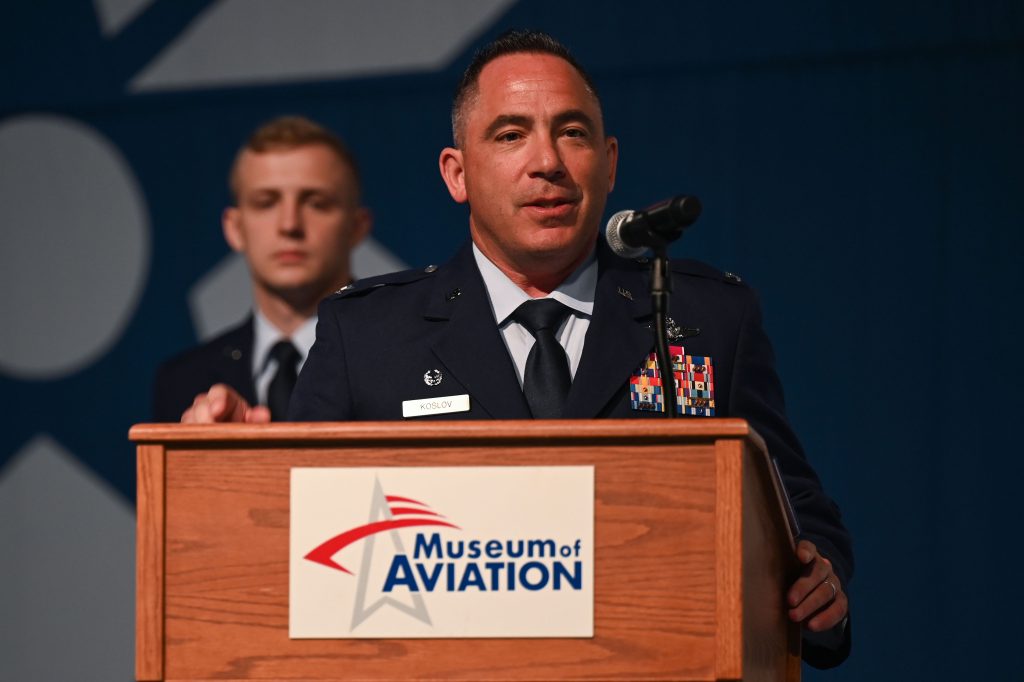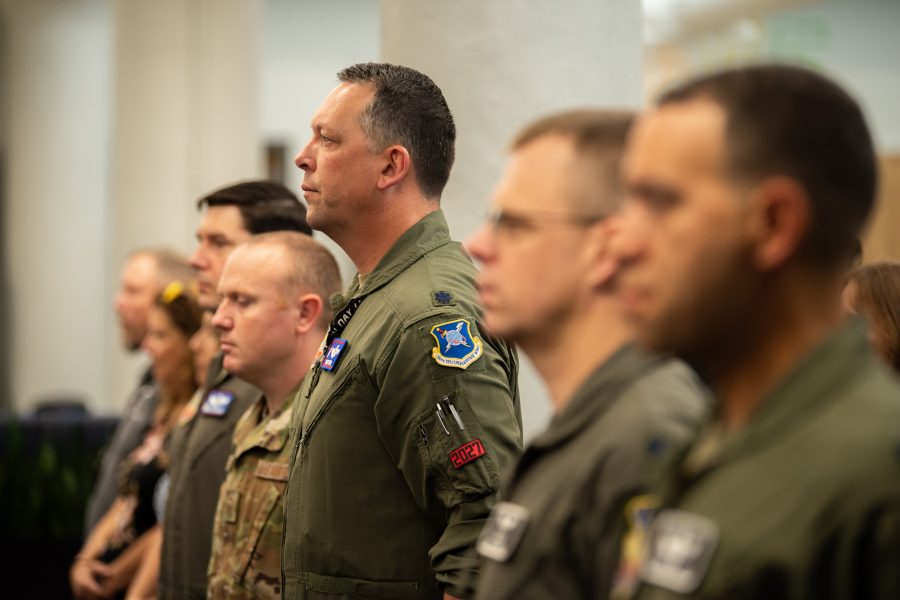The Air Force’s 350th Spectrum Warfare Wing added a new squadron April 25 and will activate another May 2—expanding the structure of the service’s lone spectrum warfare wing as it looks to grow its numbers too.
The 563rd Electronic Warfare Squadron, which stood up at Joint Base San Antonio, Texas, is “really focused on developing software capabilities for electronic warfare,” 350th commander Col. Joshua Koslov told reporters in a May 1 briefing. “They’re the first folks that have focused specifically on software for EW, not a weapon system or some sort of electronic warfare waveform type of thing.”
That focus will solve several problems the wing and the broader Air Force faces in EW, an area in which leaders have acknowledged they let their focus slip in recent decades.
“Our operational-level tools that we use as a force to plan, integrate, synchronize, and collaborate electronic warfare effects are basically nonexistent,” Koslov said. “And so we’re building that capability with this unit and those coders are going to be able to develop those tools that the joint force needs in order to execute in a wartime situation.”
The wing needs tools to parse through the “mountains of data” coming from adversaries in order to spot their strengths and weaknesses, Koslov said. That task falls to the 388th Electronic Warfare Squadron, which will activate at Eglin Air Force Base, Fla. on May 2. The 388th’s analysis will help make sure “that the combatant commands have the confidence that what we provide to them will achieve effects in the battlespace,” said Lt. Col. Timothy West, the squadron’s soon-to-be commander.
In the fast-changing and hotly contested arena of EW, making sure the right effects are used on the right targets requires tight coordination with the intelligence community, West said.
“A huge part of our mission is under validating and verifying the information we receive on Red based off of what we know about the electromagnetic spectrum, and what we know Red is doing and comparing that with known data from the IC,” he said. “And so … based on an adversary that’s completely agile in the spectrum, how do we know when they’re spoofing us versus when that’s a real capability that we now need to develop a target for and go forward from there?”

Neither squadron will be very big to start, Koslov told Air & Space Forces Magazine. But the hope is to grow them over time—150 to 200 people each within two to three years. That’s in keeping with one of the 350th’s main challenges: a lack of personnel.
In April 2023, Koslov said during an AFA Warfighters in Action event that he had more than 200 civilian and military vacancies in the wing. A little over a year later, he said they still have a “tremendous number” of open jobs.
Yet while neither new squadron will bring a surge in manpower to the 350th, they are part of a dedicated buildup in the wing’s architecture, helping to define missions and showcase where more jobs are needed, Koslov said.
“The wing is very much still a work in progress,” he said. “Just in the past year, we have stood up six units in my time here. And I predict that the wing will continue to grow, probably by at a minimum of another four units … but there’s probably some room for more than that as well.”


